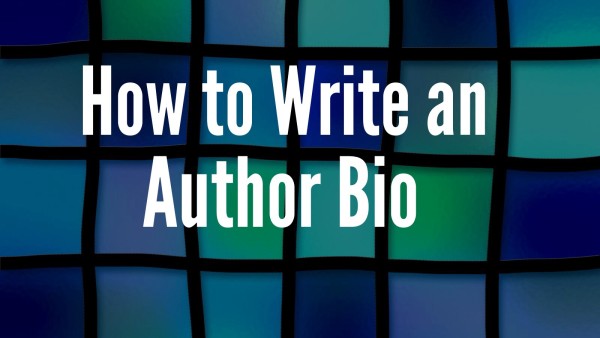 You’ve finished writing your article and are ready to send it off, but there’s one last task: writing an author bio. It’s hard to know exactly how to write an author bio, even if you’re a writer. So many things to say and so few words allowed in the author box! How do you decide what to focus on and which URLs to link to?
You’ve finished writing your article and are ready to send it off, but there’s one last task: writing an author bio. It’s hard to know exactly how to write an author bio, even if you’re a writer. So many things to say and so few words allowed in the author box! How do you decide what to focus on and which URLs to link to?
Here are some points to consider when writing an “about the author” box.
1) Decide on the purpose of the article. Is it to get people to view you as an expert? Then make sure your author box highlights your most impressive relevant qualifications. Do you also want them to go to your website? Then be sure to include a link to the exact page you want them to land on.
2) Prepare several versions of your bio in different lengths, so you can have them on hand for various uses. The “about the author” box at the end of an online article is generally two or three brief sentences (or 50 to 100 words). However, your author blurb in a newspaper or magazine might only be a few words such as “Sally Smith is an Ottawa based gardening writer”, followed by your email address. An author bio in a query letter for a book proposal would also be no more than 100 words. You can include a longer bio when you write your website biography.
3) Decide on the points you want to include. Most authors find that they have more information than they need. Be ruthless in editing your bio to include only points that are relevant. Does your fishing hobby provide good background for a murder mystery novel you are submitting to a publisher? Probably not. You worked in a coroner’s office for a couple of weeks to learn about medical examiner’s terminology? Now that’s relevant!
4) Make a list of writing credits to highlight, but confine yourself to three or else it will take up too much space.
5) Include contact information and a website so readers can learn more about you and your writing.
6) An author bio plays an important role because it communicates who you are. In the same way that a business card introduces you, a bio serves as a short introduction to your writing. Take the time to think carefully about what you want readers to remember when they hear your name.
7) Readers like to know about you. Biographical information such as marital status, number of children, pets and hobbies show that you are a normal person and helps readers relate to you.
8) Reflect your unique writing style in your author bio. Your bio provides an opportunity to give readers a sense of what to expect from your writing. Reflect the content and style of your work in how you write your author bio. For example, if you’re a humorous or satirical writer, include some humor in your bio. If you’re an academic writer, take an academic approach. The tone you take in writing your bio creates expectation of your written work.
Here are two contrasting examples of how to write an author bio to create an expectation of your writing style:
Norman Langford grew up spying on the neighbours and taking notes in a little black book. No surprise that he ended up writing spy novels!
Dr. Laura Smith has been writing on gender studies for over 20 years. Her research interests include mothering, gender roles and media representation of women.
Consider Using a Template
There’s no need to reinvent the wheel. We have a fill-in-the-blanks author bio template that will help you write a great bio. That way you can complete your bio writing task and get back to the writing that you actually enjoy!
One comment
Comments are closed.